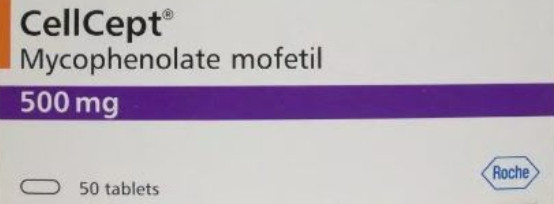
Indications
- Dermatitis
- Psoriasis.
- Atopic dermatitis : 1 gm, given orally twice daily for 4 weeks. At week 5, the dosage was reduced to 500 mg twice daily and stopped at 8 weeks.
- Dyshidrotic eczema.
- Chronic actinic dermatitis.
- Bullous dermatoses
- Pemphigus vulgaris : 2 g daily.
- Pemphigus foliaceus.
- Bullous pemphigoid.
- Cicatricial pemphigoid.
- Paraneoplastic pemphigus.
- Epidermolysis bullosa acquisita.
- Linear IgA bullous disease.
- Autoimmune connective tissue diseases
- Systemic lupus erythematosus.
- Subacute cutaneous lupus erythematosus.
- Chronic cutaneous lupus erythematosus.
- Chilblain lupus erythematosus.
- Diffuse systemic sclerosis.
- Dermatomyositis : 20 mg/kg twice daily.
- Vasculitis
- Wegener’s granulomatosis.
- Microscopic polyangiitis.
- Churg–Strauss syndrome.
- Hypocomplementemic urticarial vasculitis.
- Nodular vasculitis.
- Behçet’s syndrome (conflicting results).
- Miscellaneous
- Cutaneous Crohn’s disease.
- Sarcoidosis.
- Recurrent erythema multiforme.
- Necrobiosis lipoidica.
- Chronic urticaria.
- Lichen planus.
- Lichen planopilaris.
- Graft-versus-host disease: acute and chronic variants.
Dosage
- 1.0-1.5 gm orally two times per day.
- Start therapy with 500 mg each day ,at night, for 1 week. to minimizes GI adverse effects and improves patient compliance.
- After the first week >> increase to 500 mg twice daily >> increase in 500 mg increments every 2–4 weeks until a dose of 1.5 g twice daily (range 2–3 g daily).
Mechanism of action
- Mycophenolate mofetil is a lymphocyte selective Immunosuppressive drug.
- Mycophenolic acid ( active drug ) non-competitively binds to and inhibits inosine monophosphate dehydrogenase (IMPDH), the key enzyme in the denovo pathway within activated lymphocytes, DNA synthesis in T and B lymphocytes is preferentially inhibited.
- MMF prevents proliferation of T cells.
- MMF inhibits antibody production by activated B-cell lymphocytes.
- MMF has been shown to inhibit several fbroblast functions implicated in tissue fibrosis.
Baseline Monitoring
- Examination
- Complete physical examination\n
- Lab
- CBC.
- Liver function tests.
- Serum creatinine.
- Pregnancy test for women of childbearing potential.
- Hepatitis B and C panel.
- Purifed Protein Derivative.
Follow Up Monitoring
- Examination (at least every 3–6 months)
- Complete physical examination\n
- Lab (every 2–4 weeks following dose escalation and every 2–3 months once dose is stable)
- CBC with differential.
- Serum chemistry panel and/or serum creatinine.
- Serum liver function tests.
Side effects
- Carcinogenicity
- Lymphoproliferative disorders, non-melanoma skin cancer – controversial.
- Gastrointestinal(common)
- Dose-dependent, most common Nausea, diarrhea, soft stools, anorexia, abdominal cramps, frequent stools, vomiting, anal tenderness.
In patients who are unable to tolerate the gastrointestinal side-effects of MMF, mycophenolic acid delayed release tablets may be an alternative.
- Genitourinary
- Urgency, frequency, dysuria, burning, sterile pyuria (occasionally).
- Decrease in frequency after first year.
- Infectious
- Viral, bacterial, atypical mycobacteria, fungal (more common in transplant patients).
- Progressive multifocal leukoencephalopathy –controversial.
- Hematologic
- Dose-dependent, reversible Neutropenia, anemia, thrombocytopenia, agranulocytosis.
- Neutrophil dysplasia.
- Neurologic
- Weakness, fatigue, headache, tinnitus, insomnia\n
- Teratogenicity
- First trimester loss, external ear/facial abnormalities.
- Anomalies of distal limbs, heart, esophagus, and kidneys.
Contraindications
- Abosulte
- Pregnancy.
- Drug hypersensitivity.
- Relative
- Lactation.
- Peptic ulcer disease.
- Hepatic/renal disease (may need to reduce dose).
- Drugs that interfere with enterohepatic circulation (cholestyramine).
- Azathioprine (concomitant administration increases risk of bone marrow suppression.
When to stop taking Mycophenolate mofetil ?
- It is recommended to stop MMF in the following situations:
• Total white cell count <4 × 109/L.
• Neutrophil count <2 × 109/L.
• Platelet count <150 × 109/L.
• Aspartate or alanine aminotransferase >2 × the upper normal limit.
• Hypogammaglobulinaemia
Drug interactions
- Antacids and proton-pump inhibitors both reduce the serum levels of active MPA.
- Agents that inhibit enterohepatic recirculation, such as bile acid sequestrants and various classes of antibiotics, also lead to decreased serum MMF levels.
- Rifampicin: may decrease MMF efficacy.
- Azathioprine: also inhibits purine metabolism with potential enhanced toxicity.
- Antibiotics including cephalosporins, fluoroquinolones, macrolides, penems, penicillins, sulfonamides inhibit enterohepatic recirculation and decrease mycophenolate mofetil levels.
- Antiviral drugs: may increase mycophenolic acid plasma concentration.
- Medications such as salicylic acid, phenytoin and xanthine bronchodilators that compete with MPA for albuminbinding sites can increase the free, active fraction of MPA.
Pregnancy & lactation
- Pregnancy category D.
- Contraception is mandatory before, during and for 6 wks after therapy.
- Pregnancy and breast-feeding should be avoided during treatment and patients (including males) must use adequate contraceptive precautions.
Precautions
- The dosage should be reduced or therapy discontinued for a WBC <3500– 4000cells/mm.
- MMF should be used with caution in patients with active gastrointestinal disease, and live attenuated vaccines should be avoided.
- Patients taking mycophenolate mofetil should not be given live attenuated virus vaccines.
Drug info
- Mycophenolate mofetil (MMF) is prodrug of the antimetabolite mycophenolic acid (MPA).
- Onset of response typically requires at least 6–8 weeks.
- Mycophenolate mofetil is generally used in conjunction with other immunosuppressive drugs, most commonly as a “steroid-sparing” agent.
#Mycophenolate mofetil #Mycophenolate mofetil dosage #Mycophenolate mofetil in dermatology #Mycophenolate mofetil indications